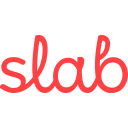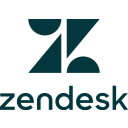Document360 vs Confluence: Finding the best knowledge management tool
- 01Document360 vs Confluence: overview
- 02What's the difference between Document360 and Confluence?
- 03Document360 pros and cons
- 04Confluence pros and cons
- 05Document360 compared to Confluence
- 06Confluence compared to Document360
- 07Features comparison
- 08Document360 vs Confluence: Which is the best for your business?
- 09Promotions on Document Management software
- 10Alternatives to Document360 & Confluence
Save up to $3,594 on Document360
Document360
6 months free + Wow site
Save up to $3,594 on Document360
Document360
6 months free + Wow site
Managing internal knowledge and documentation can be a challenge, especially when coordinating between various teams such as product development, customer support, and operations. That’s why finding the right knowledge management tool is essential to help streamline content creation, collaboration, and information sharing across your organization.
This is where platforms like Document360 and Confluence come into play. In this article, we’ll walk you through a detailed comparison of these two knowledge base tools: Document360 vs Confluence. We’ll explore their main features, key differences, and help you understand how each platform can be used to support your team’s documentation needs. Additionally, we’ll look into the unique capabilities each tool offers, such as ease of use, scalability, and integrations, so you can make the best choice for your business.
Document360 vs Confluence: overview
Document360 and Confluence are two prominent players in the world of knowledge management and team collaboration, each offering unique strengths tailored to meet specific business needs.
Document360 is highly regarded for its ease of use and focus on creating and managing structured knowledge bases. It provides a clean and intuitive interface that simplifies content creation, version control, and collaboration. Document360 is particularly well-suited for building detailed product documentation, user guides, and self-service portals. On the other hand, Confluence is a robust collaboration platform built for broader team communication and project management. Developed by Atlassian, Confluence is integrated deeply into its ecosystem, offering seamless collaboration with tools like Jira.
Now, let’s delve into the Document360 vs. Confluence comparison to help you make an informed decision when selecting the right knowledge management or team collaboration solution for your business needs.
What's the difference between Document360 and Confluence?
Document360 and Confluence are two top-tier knowledge management platforms, each catering to different organizational needs. Understanding their key differences will help you decide which solution fits best with your business requirements.
One of the main distinctions between Document360 and Confluence lies in their core focus. Document360 is a specialized knowledge base platform designed primarily for creating structured, self-service documentation. Its clean, intuitive interface simplifies content creation, categorization, and version control, making it ideal for teams focused on developing product documentation, user manuals, and help centers. The platform is purpose-built for companies needing a robust, stand-alone knowledge management solution with powerful features such as role-based access, in-depth analytics, and multi-language support.
Confluence, developed by Atlassian, is more of a general-purpose collaboration tool. While it can be used to manage knowledge bases, its functionality extends far beyond documentation. Confluence is built to support team collaboration on projects, offering tools for content creation, project tracking, and internal wikis. It integrates seamlessly with other Atlassian products like Jira, making it an excellent choice for teams already using Atlassian’s ecosystem. However, this broader scope means that Confluence may lack some of the specialized knowledge management features that Document360 offers.
Another difference between the two platforms is user experience. Document360 is often praised for its simplicity and ease of use, especially for non-technical teams that need to quickly get up to speed on managing documentation. Confluence, on the other hand, offers a more complex user interface due to its wide array of features. This makes it a better fit for teams that need a more customizable solution for broader collaboration beyond just documentation.
When choosing between Document360 and Confluence, consider whether your focus is strictly on creating and managing a knowledge base or if you need a more comprehensive collaboration tool.
Document360 pros and cons
What are the advantages of Document360?
- User-friendly interface: Document360 offers a clean, intuitive design that makes it easy to create, organize, and manage documentation. Even non-technical users can quickly get up to speed.
- Powerful version control: The platform provides robust version control features, allowing teams to manage multiple versions of articles and track changes over time. This is essential for maintaining accuracy in documentation.
- Comprehensive knowledge base features: Document360 is built specifically for creating and maintaining knowledge bases. It includes advanced categorization, search functionality, and multi-language support, making it ideal for detailed, structured documentation.
- Analytics and reporting: It offers detailed insights into how users are interacting with your knowledge base, helping teams optimize content based on real-world usage and feedback.
- Role-based access control: Document360 enables you to assign different access levels to team members, ensuring that only authorized individuals can create, edit, or delete content, making it a secure solution for large teams.
What are the disadvantages of Document360?
- Limited integrations: While Document360 has some integration options, especially with common tools like Slack and Intercom, it doesn’t offer the extensive third-party integrations that larger platforms like Confluence or Zendesk provide.
- Lacks broader collaboration features: Unlike platforms such as Confluence, Document360 is highly focused on knowledge management and lacks broader project management or team collaboration tools.
- Customization limitations: Though user-friendly, Document360 has fewer customization options for layouts and workflows compared to more flexible tools like Confluence or SharePoint.
- Cost for advanced features: Some of the more powerful features, such as advanced analytics and role-based permissions, are only available in higher-tier plans, making it potentially expensive for smaller teams.
- Smaller ecosystem: Document360 doesn’t offer a suite of other business tools (like Atlassian’s Jira or Confluence), which might limit its appeal for companies looking for an all-in-one solution.
Compare Document360 to other tools
Confluence pros and cons
What are the advantages of Confluence?
- Robust collaboration features: Confluence is designed for team collaboration, enabling users to create, share, and edit documents in real time. It’s perfect for managing projects, brainstorming, and team communication in a centralized space.
- Seamless integration with Atlassian products: Confluence integrates tightly with other Atlassian tools like Jira, Trello, and Bitbucket, making it an excellent choice for development teams or businesses already using the Atlassian ecosystem.
- Highly customizable: Confluence offers extensive customization options. Teams can create pages, templates, and workflows tailored to their specific needs, making it adaptable to a wide range of use cases beyond just documentation.
- Scalability: Confluence is well-suited for both small teams and large enterprises. Its flexibility and ability to handle complex projects, coupled with robust permission settings, make it scalable as your business grows.
- Rich content creation tools: The platform allows for the easy creation of rich, multimedia content. Users can embed videos, diagrams, and other interactive elements directly into Confluence pages, enhancing collaboration and documentation quality.
What are the disadvantages of Confluence?
- Steep learning curve: Confluence’s powerful features come with complexity. New users often face a steep learning curve, especially if they are unfamiliar with other Atlassian tools, which can slow down initial adoption.
- Overwhelming for simple use cases: For teams looking for a straightforward documentation solution, Confluence’s wide range of features might feel overwhelming. It can be overkill if you only need a basic knowledge base tool.
- Costly for larger teams: While Confluence offers free and basic plans, its pricing can become quite expensive for larger teams, especially when factoring in costs for additional plugins and integrations.
- Requires admin expertise: Customizing Confluence effectively often requires advanced technical skills or admin expertise. Without this, teams may struggle to fully utilize its features or manage complex permissions.
- Search functionality limitations: While Confluence provides a search function, some users report that it isn’t as powerful or accurate as they would like, particularly in large workspaces with extensive documentation.
Compare Confluence to other tools
Document360 compared to Confluence
Document360 and Confluence serve different needs within knowledge management and collaboration. Document360 is a specialized platform designed specifically for building structured knowledge bases, with an intuitive interface and features focused on documentation, version control, and categorization. It's ideal for teams looking to create self-service portals or product manuals.
In contrast, Confluence is a more general-purpose collaboration tool, built for broader team communication, project management, and content sharing. It integrates seamlessly with other Atlassian products like Jira, making it ideal for software development teams. While Confluence offers broader functionality, Document360 excels in dedicated documentation environments.
Is Document360 better than Confluence?
Whether Document360 is better than Confluence depends on your organization’s specific needs. Document360 excels in creating structured, standalone knowledge bases, making it a superior choice for teams that prioritize focused documentation, such as product manuals or help centers. Its user-friendly interface and specialized features streamline the documentation process.
However, Confluence offers broader functionality with project management, team collaboration, and seamless integration with other Atlassian tools like Jira. It’s a better option for organizations needing a comprehensive platform for cross-team collaboration. Ultimately, Document360 is better for dedicated documentation, while Confluence shines in environments requiring more extensive collaboration and project tracking.
What is Document360 best used for?
Document360 is best used for creating and managing structured knowledge bases, making it an ideal solution for teams that need to develop comprehensive product documentation, user guides, and self-service portals. Its intuitive interface allows content creators to easily organize and categorize information, while robust version control ensures accuracy across multiple updates.
Document360 excels in environments where detailed, structured documentation is critical, such as SaaS companies, customer support teams, and technical writing departments. The platform also provides features like role-based access control, multi-language support, and analytics, helping organizations maintain, scale, and optimize their knowledge management systems effectively.
Can Document360 replace Confluence?
Document360 can replace Confluence in certain use cases, particularly when the primary focus is on creating and managing structured knowledge bases and documentation. It offers a more specialized, user-friendly platform for handling product manuals, customer support portals, and internal documentation. However, it lacks the broader team collaboration and project management features that Confluence provides.
If your business relies heavily on collaboration across various projects and needs integration with tools like Jira, Confluence is more suitable. Document360 is a strong replacement for companies focused on documentation, but not for those needing a comprehensive collaboration platform like Confluence.
Is Document360 cheaper than Confluence?
Document360 can be cheaper than Confluence, depending on the specific needs and features required by your organization. Document360 offers pricing tiers that cater primarily to knowledge management and documentation, which may result in lower costs if your focus is strictly on building knowledge bases.
Confluence, while offering a broader set of collaboration and project management tools, can become more expensive, especially as team size increases or when adding advanced features and integrations with other Atlassian products like Jira. If your business only needs a dedicated knowledge base solution, Document360’s pricing could be a more cost-effective option compared to Confluence.
Is there a better Document Management software than Document360?
Document360 is a highly regarded tool for knowledge base management, but it's worth considering whether there might be a better software option depending on your specific documentation needs.
There are several notable alternatives to Document360, including Confluence, Zendesk Guide, Notion, and Helpjuice. These platforms offer varied strengths, such as broader collaboration features, project management tools, or deeper integrations with other business software.
The best choice of knowledge base software depends on your organization’s requirements, team workflows, and the complexity of your documentation. While Document360 excels in ease of use and structured knowledge management, other platforms might offer additional features like project tracking, collaboration tools, or seamless integration with existing systems.
6 months free + Wow site on Document360
Get 6 months free + Wow site on Document360 and up to $3,594 savings with Secret.
Confluence compared to Document360
Confluence and Document360 serve different purposes in knowledge management and collaboration. Confluence is a versatile platform designed for team collaboration, project management, and knowledge sharing. It integrates seamlessly with other Atlassian tools like Jira, making it ideal for teams that need comprehensive project tracking and collaboration.
Document360, on the other hand, is specialized for creating and managing structured knowledge bases, focusing on product documentation, user manuals, and help centers. Its interface is more streamlined for documentation purposes, while Confluence offers broader functionality but can be more complex. For pure documentation needs, Document360 may be a better fit.
Is Confluence better than Document360?
Whether Confluence is better than Document360 depends on your specific use case. Confluence is superior for organizations that require a versatile tool for collaboration, project management, and knowledge sharing across teams. Its tight integration with other Atlassian products, like Jira, makes it an ideal choice for software development teams or businesses needing more than just documentation.
However, if your focus is on creating structured, easily managed knowledge bases or product documentation, Document360 is often a better fit due to its simplicity and specialized features. Ultimately, Confluence is better for collaboration-heavy environments, while Document360 excels in dedicated documentation management.
What is Confluence best used for?
Confluence is best used for team collaboration, project management, and knowledge sharing within organizations. It provides a flexible platform where teams can create, share, and manage content such as project plans, meeting notes, and internal documentation. Confluence integrates seamlessly with other Atlassian products like Jira, making it especially useful for development teams tracking projects and tasks.
It excels in environments where cross-team communication and project visibility are essential, allowing users to collaborate in real time, manage workflows, and organize information efficiently. Its versatility makes it ideal for companies needing more than just a knowledge base, focusing on broader team collaboration.
Can Confluence replace Document360?
Confluence can replace Document360 in certain scenarios, particularly if your organization values team collaboration and broader project management alongside documentation. While Confluence provides knowledge management capabilities, its primary strength lies in facilitating team collaboration, task management, and integration with other tools like Jira.
However, if your focus is on creating structured, dedicated knowledge bases or technical documentation with advanced features like version control, Document360 is better suited for that purpose. Confluence is more versatile for cross-team projects, but it lacks some specialized features that make Document360 ideal for maintaining a well-organized, standalone knowledge base.
Is Confluence cheaper than Document360?
Confluence’s pricing can be cheaper than Document360, depending on the features and scale of your usage. Confluence offers a free plan for small teams and relatively affordable pricing for larger teams, especially if you require its broad collaboration features. However, the cost increases as you add more users and integrate other Atlassian products like Jira.
Document360, while focused on knowledge management, has pricing tiers that reflect its specialized functionality for building structured knowledge bases. For companies needing only documentation tools, Document360’s pricing may be comparable or slightly higher, especially if advanced features like analytics or multi-language support are required.
Is there a better Collaboration software than Confluence?
Confluence is a powerful collaboration and knowledge management platform, but it's important to consider whether there might be a more suitable software solution for your specific needs.
Several notable alternatives to Confluence exist in the collaboration and knowledge management space, including Notion, Microsoft SharePoint, ClickUp, and Slite.
The choice of software depends on your organization’s unique requirements, collaboration complexities, and team workflows. While Confluence offers robust project management, integration with Atlassian tools like Jira, and scalability, other platforms may excel in simplicity, real-time collaboration, affordability for small teams, or specific features like visual content creation and task tracking. Exploring alternatives can help you find the best fit for your organization.
Features comparison
Confluence Outshines Document360 in Integration Capabilities
Document360 performs fairly well in terms of integration capabilities, offering smooth connections with popular tools such as Slack, GitHub, and Google Analytics. Its RESTful API also allows developers to create custom integrations, making it flexible for specific business needs. However, the range of available integrations is still expanding, meaning some niche tools or less common platforms might not yet be supported.
In contrast, Confluence excels in this area, benefiting from its long-standing presence and deep integration with a wide variety of platforms. It seamlessly connects with project management tools like Jira, customer service platforms like Zendesk, and collaboration hubs like Microsoft Teams. Confluence's extensive ecosystem of integrations makes it a powerful hub for businesses looking to streamline workflows across multiple tools, offering far more integration options than Document360. This broad connectivity gives Confluence a distinct edge when it comes to integration flexibility and value in complex collaborative environments.
Document360 Excels Ahead of Confluence with AI-Powered Features
While both Document360 and Confluence offer robust knowledge sharing and content management tools, Document360 sets itself apart with its AI-powered capabilities. These advanced features streamline the content creation process in ways that Confluence currently does not match. For instance, Document360's AI writer can assist users by generating content drafts quickly, while the SEO description generator helps optimize articles for search engines effortlessly.
Additionally, features like the article summarizer condense long texts into concise summaries, and the title recommender offers suggestions to enhance clarity and engagement. These AI-driven tools not only speed up the workflow but also elevate the overall documentation experience, giving Document360 a clear advantage over Confluence in content creation and management.
Both Document360 and Confluence Offer Excellent Knowledge Base Management
Both Document360 and Confluence excel in the creation and management of substantial knowledge bases, offering highly effective platforms for storing and organizing essential content. Document360 is tailored specifically for structured documentation, making it ideal for building product manuals, tutorials, and detailed user guides. It allows for easy categorization and searchability, and its intuitive interface simplifies version control and content updates.
Confluence, on the other hand, provides a broader collaboration platform, where knowledge base content is seamlessly integrated with project management and team collaboration. Its flexibility allows teams to embed multimedia, link to Jira tickets, and create wikis. Both tools provide powerful solutions for knowledge sharing, making it hard to pick a clear leader as each excels in different contexts.
Document360 Excels Ahead of Confluence in Role-Based Access Control for Secure Content Management
When it comes to providing secure content management through role-based access control, Document360 stands out as the superior tool. It offers highly granular control over user permissions, allowing administrators to define who can create, edit, or manage specific content at various levels. This is particularly valuable for organizations dealing with sensitive or proprietary information, where tight control over content visibility and modifications is crucial. Document360’s ability to assign roles based on user responsibilities enhances security, especially for large teams.
While Confluence also provides role-based access, Document360's focused approach makes it better suited for companies requiring strict content governance, ensuring that sensitive documents are handled securely and access is properly restricted.
Document360 Excels Ahead of Confluence for User-Friendliness
When it comes to ease of use, Document360 truly shines. The platform’s user interface is designed with simplicity and intuitiveness in mind, making navigation easy even for beginners. Onboarding is smooth, with minimal setup required, and customer support is readily available to assist when needed. Key features, such as version control and category management, are prominently positioned, and the dashboard is clean and uncluttered. This allows users to focus on creating and managing high-quality content without unnecessary distractions.
In contrast, Confluence is a feature-rich platform packed with powerful tools for collaboration and project management. However, this extensive functionality can make it more complex to navigate, particularly for new users, leading to a steeper learning curve. While Confluence offers comprehensive tutorials and documentation, mastering all of its features may require additional time and effort, making it less straightforward than Document360 for teams that prioritize ease of use.
Confluence Outshines Document360 in Branding Customization
When it comes to branding customization, Confluence emerges as the superior tool, allowing users to deeply integrate their brand identity across the platform. Confluence provides extensive options to tailor the workspace, including the ability to incorporate company logos, brand colors, and personalized layouts, giving businesses the flexibility to create a workspace that aligns closely with their visual identity. This level of customization enables teams to maintain consistent branding across internal documentation and collaboration spaces.
While Document360 supports basic customization, such as adding logos and offering multilingual support for global audiences, it doesn't offer the same depth. Confluence's robust branding options make it the preferred choice for businesses that prioritize a personalized, brand-consistent user experience.
Confluence Excels Ahead of Document360 in Real-Time Feedback Management
Feedback is essential for continuous improvement, and Confluence excels in managing it effectively. With its robust features, team members can comment directly on pages, offer suggestions, and provide feedback in real time, fostering collaboration and transparency. This dynamic interaction ensures that everyone can actively contribute, helping to refine documentation and project workflows. Confluence also allows users to tag teammates, resolve comments, and track discussions, making feedback loops more efficient.
In contrast, Document360 focuses primarily on structured knowledge management and lacks the same level of real-time collaboration. This gives Confluence a clear advantage in promoting team participation and engagement, driving project success through active input.
Subscribe to our newsletters.
No FOMO here. Stay up-to-date on all the latest deals and news with our monthly newsletter straight to your inbox like 125,000+ entrepreneurs (+ Get 10% off on on our Premium Membership!)
Document360 vs Confluence: Which is the best for your business?
Document360 is the best tool for you if:
- You need a dedicated platform for creating and managing structured knowledge bases, product documentation, or help centers with powerful categorization, version control, and advanced search features for easy navigation.
- Your team values ease of use, as Document360 provides a clean, intuitive interface that simplifies content creation and management, minimizing the learning curve for both technical and non-technical users.
- You require robust role-based access control to ensure that sensitive information is securely managed, with granular permissions to control who can view, edit, or publish content within the knowledge base.
- You want AI-powered tools, such as an AI writer, article summarizer, and SEO description generator, to streamline the content creation process and improve the quality and discoverability of your documentation.
- Your organization prioritizes multi-language support for a global audience, as Document360 makes it easy to create and manage content in multiple languages, ensuring accessibility for diverse user bases.
Confluence is the best tool for you if:
- You need a versatile platform that integrates seamlessly with Atlassian tools like Jira, making it ideal for teams managing projects, tasks, and documentation in a highly collaborative environment.
- Your team prioritizes real-time collaboration and feedback, as Confluence allows users to comment, suggest edits, and interact on pages directly, fostering active participation and engagement in ongoing projects.
- You require advanced project management features alongside documentation, such as task tracking, meeting notes, and team collaboration spaces, which Confluence handles efficiently for teams working on complex, multi-layered projects.
- You want extensive customization options, allowing your team to personalize workspaces with branding elements, custom templates, and tailored workflows to align with your organization's specific processes.
- Your organization benefits from deep integrations with a wide range of third-party tools, as Confluence connects seamlessly with platforms like Slack, Trello, and Zendesk to streamline workflows across teams.
Alternatives to Document360 & Confluence
Promotions on Document Management software
Start saving on the best SaaS with Secret.
Secret has already helped tens of thousands of startups save millions on the best SaaS like Document360, Confluence & many more. Join Secret now to buy software the smart way.













